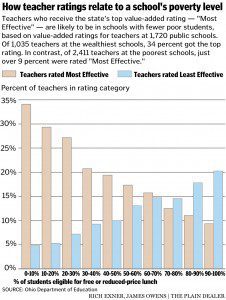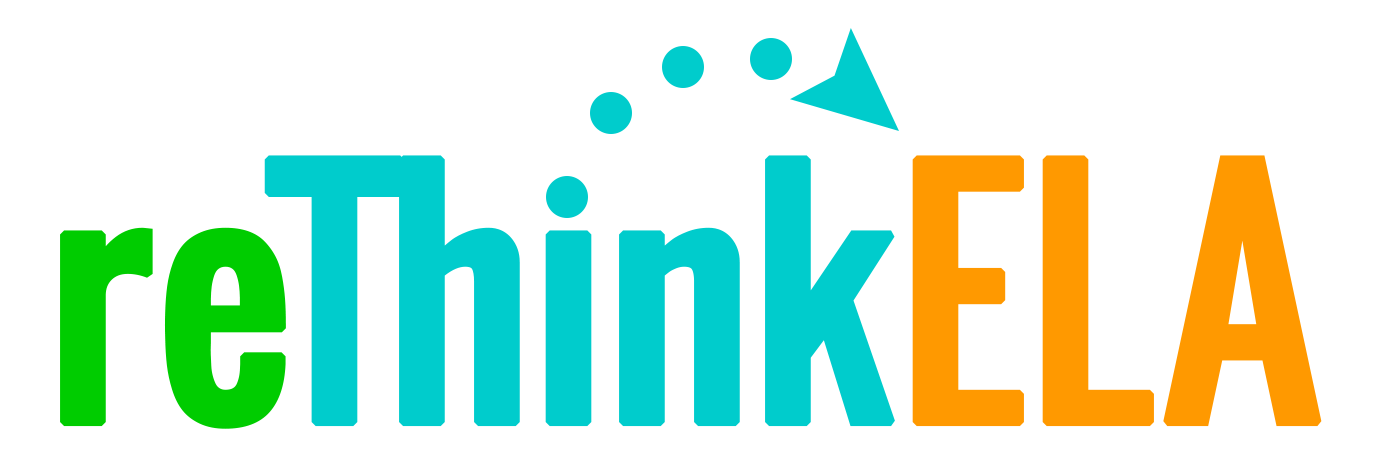
A Facebook friend recently tagged me in a post, asking a very interesting question about the value added model component of teacher evaluations. Her question:
…will you be punished if students perform poorly? If not I see not one bad thing about this; we’re investing in or future is how I look at it.
I admit, in the craziness of managing the yearbook staff for the first year, and trying to engage my 8th graders in anything but the latest middle school drama, I have not spent much time researching VAM. However, my wonderful online mentors, whose blogs I read daily, have written some well-researched articles that I think will say everything I would want to… only better.
I’m going to start with a couple of links from our State Department of Education and the Oklahoma State School Board Association, which explain what VAM is supposed to be:
Value Added Measures: Frequently Asked Questions (DOE)
The Building Blocks of TLE (OSSBA)
This all sounds great — until you consider other factors that our completely outside the control of the teacher, or the school. These factors include the home lives of the students, economic status, community support, student attitudes, parental support, medical status, nutritional status… I could go on. After all, we’re talking about kids here.
UPDATE (8:49 a.m.): John Thompson of @ The Chalk Face wrote in his article, If Economists Studied Education Research, Would They Still Promote Value-Added Evaluations?:
It is far harder to raise the performance of children who do not read for comprehension well enough to read to learn. Consequently, good teachers in the low-performing schools are likely to have lower value-added than equally good teachers in high-performing schools. This helps explain why value-added estimates are unfair to teachers with students with high percentages of poor and special education students, and they are most unfair to teachers with high percentages of English Language Learners.
John’s article contains excellent research and insight into VAM and the potential effects of the Vergara vs. California lawsuit.
Personally, I have a very hard time putting the weight of a teacher’s career, a school’s reputation, property values in a community … and more… on the backs of the young people we are supposed to be nurturing, young people who have no say in the matter, young people who we are making pawns in a game of money and power, young people who are wising up to the game.
Here are some articles from Oklahoma educators explaining the impact of VAM:
Here is my experience:
My very first year of teaching, I taught at a rural school with low poverty rates. In my first semester as a teacher, 92 percent of my students passed the English II End-Of-Instruction exam. Pretty sweet, right? I received a 3 out of 5 on my Tulsa teacher evaluation. A 4 is considered the highest most people will ever get.
Well, my second year of teaching, I moved to a high poverty (85 percent of the students are on free and reduced lunches) urban middle school with 20 percent of the students in the special education program. My first year in this school, and my second year of teaching, maybe 50 percent of my students passed the 7th grade reading Oklahoma Core Curriculum Test. Did I suddenly become a terrible teacher my second year?!? Is my co-teacher, who has at least three times as many years of experience as I have, a terrible teacher?
My students worked hard all year long. Many of them made great improvement on their SRI and Achieve3000 reading scores.
But none of this matters because the test scores fell flat. My school received a D- rating.
For the record, I received another 3 on my evaluation, this time, under the Marzano system.
This year, my third year of teaching, we do not know exactly how many students passed the 8th grade reading OCCT. However, based on what we think the cut score will be, and not counting the special education students who took the pencil and paper version of the test, only about 65 percent of my students passed.
Each of my classes have shown growth in their reading skills from the beginning of the year on the STAR reading test scores. Many kids have gained multiple years according to this test. Some of them are still below grade level. As their teacher, I have also seen growth in their maturity, their organization, their ability to get along with other people, their ability to read silently for sustained amounts of time, their ability to work out problems for themselves, their confidence in their reading.
For the record, I received all 4s on my Marzano evaluation this year — except for one 5, which is the only 5 that principal has ever given.
But my school is most likely headed to an F this year.
I’m headed to a small rural school with lower levels of poverty and higher test scores. I’m sure I will not be punished next year.
But my school will be, my students will be.
I have students who did not pass last year, who I am certain did this year, based on their raw scores.
I also have students who are smart, who have worked hard, but who I am certain did not pass. They will have to take remediation classes instead of electives next yewar. If they can’t pass, they may not be able to drive, hindering their ability to get jobs and support their families. This breaks my heart.
To answer my friend’s question: Yes, teachers, schools and students will be punished under the state’s VAM system, once it is fully implemented.
So, if you want to know what value I really add as a teacher, if you want to know what teachers make, watch this video:
